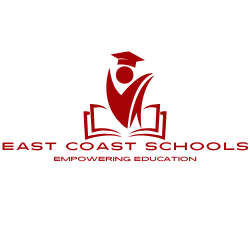A Shifting Landscape for Higher Education
In recent years, colleges and universities across the United States, including the prestigious institutions of the East Coast, have faced a growing challenge: declining student enrollment. Driven by a combination of demographic shifts, changing attitudes toward higher education, and the rising cost of tuition, this trend is forcing East Coast colleges to rethink how they recruit, engage, and support students.
In this blog, we’ll explore how East Coast colleges innovate to combat declining enrollment, their strategies to attract students, and what prospective applicants should expect as the admissions landscape evolves.
Why Enrollment is Declining at East Coast Colleges
1. Demographic Decline
The Northeast has one of the fastest-shrinking populations of college-aged students in the U.S. As birth rates have steadily declined, colleges — especially smaller liberal arts schools and regional institutions — are finding themselves competing for a shrinking pool of applicants.
2. Rising Cost Concerns
With tuition at private East Coast colleges often exceeding $60,000 per year, families are increasingly questioning whether the return on investment is worth it. This has led some students to seek lower-cost alternatives, such as community colleges, online programs, or state schools outside the region.
3. Changing Attitudes Toward College
The COVID-19 pandemic accelerated a shift in attitudes about needing a four-year degree. Many students are exploring alternative pathways — including apprenticeships, boot camps, and online micro-credentials — in place of or alongside traditional college degrees.
Strategies East Coast Colleges Are Using to Combat Enrollment Declines
1. Expanding Recruitment Beyond the Northeast
Many East Coast colleges aggressively recruit students from the South, Midwest, and international markets. Colleges like Northeastern University and Boston University have significantly increased their outreach in California, Texas, and Asia to broaden their applicant pool.
2. Enhanced Financial Aid and Tuition Discounting
Many private colleges offer more generous need-based aid and merit scholarships to ease the financial burden. In fact, tuition discount rates at private East Coast colleges have hit record highs, a sign that institutions are working hard to make enrollment more financially feasible.
3. Flexible and Hybrid Learning Options
Colleges are increasingly blending in-person and online learning options to appeal to students who want more flexibility. Schools like the University of Massachusetts Amherst and Rutgers University are expanding hybrid programs that let students balance work, internships, and academics more easily.
4. Emphasizing Career Outcomes and ROI
East Coast colleges are leaning heavily on their strong alumni networks and proximity to major economic hubs (like Boston, New York, and Washington, D.C.) to market themselves as launchpads for career success. Expect more emphasis on job placement rates, internship partnerships, and salary data in marketing materials.
5. Expanding Transfer Pathways
Community college transfer agreements are becoming a critical recruitment tool for East Coast colleges, especially smaller regional schools. These partnerships help students start at a lower-cost institution and seamlessly transfer to a four-year school to complete their degree.
6. Rebranding and Niche Positioning
Some schools are doubling down on niche strengths — whether that’s environmental science, public policy, or arts programs — to carve out a unique identity. By marketing specialized programs, these colleges hope to attract students with very targeted academic and career goals.
7. Focus on Adult Learners and Non-Traditional Students
Colleges are no longer solely focused on the 18-year-old first-year student. Many East Coast colleges are expanding programs designed for working adults, career changers, and military veterans. This includes accelerated programs, evening classes, and online certificates.
What This Means for Prospective Students
For students applying to East Coast colleges, these changes present both challenges and opportunities:
- More Financial Aid: As colleges compete for students, they’re more likely to offer better aid packages.
- More Admissions Flexibility: Test-optional policies and expanded transfer options give students multiple ways to enter top colleges.
- Increased Focus on Career Support: Students can expect stronger career services, more internships, and a clear focus on employability.
- A Wider Range of Program Formats: Whether you want traditional on-campus learning, hybrid programs, or accelerated degrees, East Coast colleges offer more flexibility than ever.
Conclusion
The East Coast has long been home to some of the world’s most prestigious and innovative colleges. As enrollment declines challenge the region, these institutions are proving that adaptability and creativity can help them evolve and thrive.
For students, this means more options, better financial aid, and a renewed focus on outcomes. If you’re considering applying to an East Coast college, now is the time to explore how these schools are innovating to meet the needs of today’s students.
